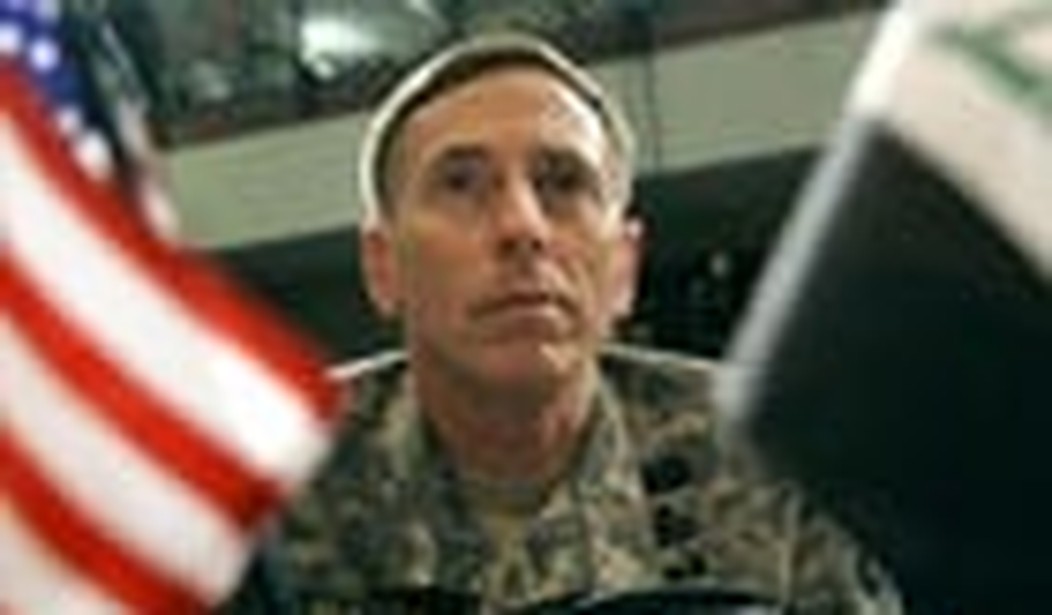Several weeks ago on January 10, U.S. air strikes dropped 40,000 pounds of bombs in ten minutes on targets south of Baghdad. The strikes occurred two days into a new offensive against al Qaeda in Iraq in an operation dubbed Marne Thunderbolt, which is part of a larger nationwide offensive, Phantom Phoenix. Two B1 bombers and four F16 fighters took part in the attack.
An Associated Press account recalled:
U.S. warplanes unleashed one of the most intense airstrikes of the Iraq war Thursday, dropping 40,000 pounds of explosives in a thunderous 10-minute onslaught on suspected al-Qaida in Iraq safe havens in Sunni farmlands south of Baghdad.
The mighty barrage-recalling the Pentagon’s “shock and awe” raids during the 2003 invasion-appeared to mark a significant escalation in a countrywide
offensive launched this week to try to cripple remaining insurgent
strongholds.
A blogger at liberal blog Firedoglake huffed in response:
I’m sure this means we’re winning…
…That the insurgency — five years after “Mission Accomplished” — is still powerful and entrenched enough to draw airstrikes of that size, that close to Baghdad, should tell Americans everything they need to know about how completely futile this war is.
At The Moderate Voice, Swaraaj Chauhan wheezed:
After shamelessly proclaiming from rooftops that situation is normalising in Iraq, the US administration would find it difficult to explain why it has to resort to “shock and awe” strategy even after five years of occupation of that country.
In the minds of these bloggers and in the minds of some journalists (especially in some Arab news outlets), the size of the air strike in the rural date palms and farmland south of Baghdad is evidence that the “surge” of U.S. forces in Iraq, the counter-insurgency (COIN) doctrine being implemented, and the overall war in Iraq, is a failure.
Not quite.
In fact, they’re dead wrong.
According to Col. Terry Ferrell, commander of the 2nd Brigade, 3rd ID, the intelligence to plan the Jan. 10 air strikes came from local Iraqi civilians “protecting their own, protecting their towns” from al Qaeda in Iraq. The purpose of the Jan. 10 strikes was to eliminate defensive positions, including weapons caches and IEDs (including HBIEDs–structural bombs, homes rigged with heavy explosives) targeted at approaching coalition forces.
Local Iraqi civilians collected enough intelligence over the last several months to pinpoint more than 40 targets.
According to Col .Steven Boylan, many of the bombs dropped during the strike targeted deep-buried IEDs. Boylan also noted that many of the strikes triggered “numerous secondary explosions confirming the hits.” He also confirmed that this was “very sparsely populated area,” and that Iraqi civilians were evacuated in advance of the strikes.
On January 19, Bob Deans of Cox News Service noted that far from being a sign of failure, the new air campaign in Iraq is a sign of success of General Petraeus’ COIN doctrine. Deans wrote:
One day last week, forces from the Army’s 3rd Infantry Division
spotted a set of bunkers south of Baghdad identified as training sites
for al-Qaida recruits.No firefight followed. No American troops were killed. Instead, the bunkers were destroyed by 34,000 pounds of satellite-guided bombs dropped from a B-1 Lancer flying high overhead…
…Although the public and political focus over the last year has centered on the addition of some 30,000 U.S. ground troops in Iraq since last spring, the air surge appears to have played a vital role in reducing American casualties in recent months and helping to disrupt and demoralize insurgents and terrorists, military officials say.
“Keeping soldiers off the ground keeps them safe,” said Maj. James Wilburn, daytime chief of operations in Iraq for the 2nd Brigade combat team of the 3rd Infantry Division. “So we make every effort to use air assets when circumstances allow.”
You’ll note that this was a separate strike than the Jan. 10 strike, but that it had similar results: no U.S. casualties, no known civilian casualties, and the destruction of al Qaeda targets. The use of air power to help secure the area for coalition forces was followed up on the the creation of a new combat outpost.
Critics of air power are quick to assert that the use of aircraft is sure to increase civilian casualties. That assumption is built upon the old technology of “dumb” bombs and far-less-exact intelligence gathering methods than those currently being used. In the same article, Deans quotes Marc Garlasco of Human Rights Watch:
…the air surge has not caused “an appreciable loss of civilian life.”
“It is very deliberate; they are very careful,” Garlasco said. “The way that the Air Force is fighting there now is in lockstep with the hearts and minds strategy on the ground.”
Similar air strikes against fixed targets identified by Iraqi civilians and U.S. intelligence have continued over the past few weeks, but have garnered far less media attention. On Jan. 20, 19,000 pounds of precision bombs destroyed 35 targets. By that point in Marne Thunderbolt, close air support strikes targeting weapon caches and IEDs had destroyed 99 targets in Arab Jabour, with no known civilian loss of life. Such targeted strikes have continued on an admitted smaller scale, with almost no media attention. According to Air Force Link, coalition aircraft flew 51 close-air support missions in Iraq on Jan. 29, including strikes that targeted a HBIED.
Perhaps critics of the “air surge” will take the success of Iraqi-provided targeting as a sign that the counter-insurgency strategy in Iraq is indeed working… but I wouldn’t hold my breath.
Bob Owens blogs at Confederate Yankee.









Join the conversation as a VIP Member